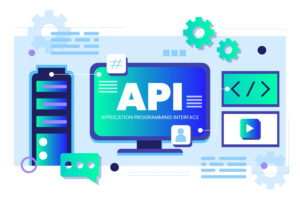Selecting the appropriate backend stack is a crucial choice that can have a big impact on a project’s performance, scalability, and maintainability in the fast-paced world of online development. Given the abundance of programming languages and frameworks available, developers frequently encounter a dilemma when deciding which stack is best for their backend development requirements. We’ll go over the important things to think about in this blog and walk you through the process of selecting the best languages and frameworks to learn the backend.
Understanding the Requirements
It’s important to comprehend the particular requirements of your project before sifting through the plethora of possibilities. Take into account elements including your application’s type, the volume of traffic you anticipate, your need for scalability, and any laws that apply to your sector. A one-size-fits-all strategy isn’t appropriate here because different projects could call for different features and performance levels.
Programming Languages
Python
Python is a versatile language that is frequently selected for its ease of use. It is well-known for being simple and easy to read. It has a vibrant library and framework community, with Django and Flask being well-liked options for web development.
JavaScript (Node.js)
With the introduction of Node.js, JavaScript—traditionally used for frontend development—has become incredibly popular on the server side. It encourages code reuse by enabling developers to work with just one language—JavaScript—for both frontend and backend development.
Java
Java is well known for its scalability, performance, and dependability and is a mainstay in the enterprise space. Java frameworks such as Spring offer a strong basis on which to construct intricate applications.
Ruby
Ruby on Rails, a web application framework written in Ruby, emphasizes convention over configuration, enabling rapid development. It’s suitable for startups and small to medium-sized projects.
Web Frameworks
Django (Python)
A high-level web framework called Django is well-known for its “batteries-included” attitude. It has built-in capabilities like an ORM, admin panel, and authentication.
Express.js (Node.js)
Express.js is a flexible and simple Node.js framework that’s perfect for creating lightweight, quick, and scalable apps. It works very well for creating RESTful APIs.
Spring Boot (Java)
Spring Boot, which is built on top of the Spring framework, makes it easier to design applications that are ready for production. It has several features and adheres to the convention over configuration concept.
Ruby on Rails (Ruby)
Ruby on Rails is known for its elegant syntax and developer-friendly conventions. It emphasizes convention over configuration and enables rapid development.
Scalability and Performance
Consider the scalability requirements of your application. Some languages and frameworks are better suited for handling high traffic and scaling horizontally. Node.js, for instance, excels in handling a large number of concurrent connections, making it suitable for real-time applications.
Community and Documentation
A vibrant community and comprehensive documentation are invaluable resources for developers. Choose languages and frameworks with active communities, as this ensures continuous support, updates, and a wealth of shared knowledge.
Conclusion
Making wise choices regarding the programming languages and frameworks that best fit the requirements of your project is essential to mastering the backend. With a backend stack that ensures successful development and long-term maintainability, you may choose with confidence, taking into account elements like community support, scalability, and project requirements. Whether you go with the elegance of Ruby on Rails, the dependability of Java and Spring Boot, the simplicity of Python and Django, or the adaptability of Node.js, your decision should match the objectives of your project and the experience of your development team. You’ll be well on your way to developing dependable, scalable, and effective online apps with the correct backend stack.
Click here to have an overview on Backend Development


